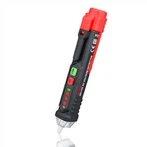Introduction to the Capabilities of Confocal Microscopes
Confocal microscopy mainly uses 3D capture imaging technology, which achieves digital imaging through high-intensity laser from the pinhole of a digital camera, and has strong vertical depth resolution ability.
Imaging principle of confocal microscope
The obtained image is captured by focusing light from a focal plane through a pinhole digital camera, and a complete 3D image is compiled using software based on the accumulated sequence of images from different focal planes.
The magnified image details displayed by confocal microscopy systems are higher than those of conventional optical microscopes. Traditional optical microscopes are often equipped with CCD cameras with low sensitivity to capture images, which cannot detect low light intensity such as fluorescence. In contrast, confocal microscopy systems use highly sensitive photomultiplier tubes as detection elements, which can exhibit high sensitivity to weak fluorescence signals and eliminate background noise by reducing the excitation range and using optical sectioning.
Under the same objective magnification conditions, confocal microscopy displays images with clearer and finer morphological details, and higher lateral resolution. Like a powerful tool for micro nano detection, confocal microscopy has many differences from white light interferometers. If we use one word to describe it, white light interferometers are "wen", while confocal microscopes are "wu". White light excels in detecting sub nanometer level ultra smooth surfaces and pursues precise detection values; However, confocal microscopy is good at detecting rough contours at the micro nano level. Although its detection resolution is slightly inferior, it can provide colorful true color images for easy observation.
The VT6000 series confocal microscope is based on confocal technology, combined with precision Z-direction scanning modules, 3D modeling algorithms, etc. It can measure various surface parameters including smoothness to roughness, low reflectivity to high reflectivity, and roughness, flatness, micro geometric profile, curvature, etc. of workpieces from nanometer to micrometer levels. It can measure and analyze surface morphology features such as surface profile, surface defects, wear, corrosion, flatness, roughness, waviness, pore gap, step height, bending deformation, and processing of various products, components, and materials.






